Back to Restorative Appointments
The Opal-Z Screw Retained Full Arch restoration is comprised of a FDA approved Zirconia material stained and glazed and FDA approved CAD/CAM milled bar. It is the material of choice for problems such as reduced available space, bruxism, or denture teeth fracturing. It offers a good solution for cases with lack of restorative space. It works for the upper jaw, but it performs better in the lower jaw due to its lack of esthetic. It can only be removed by the Doctor.
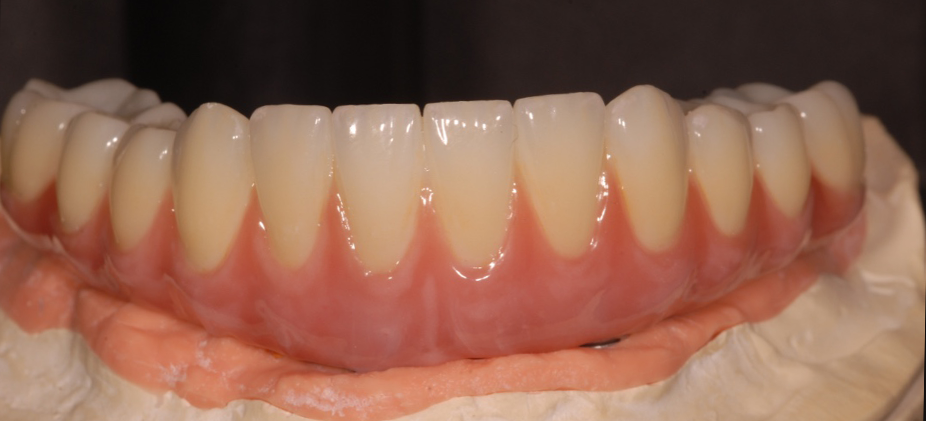

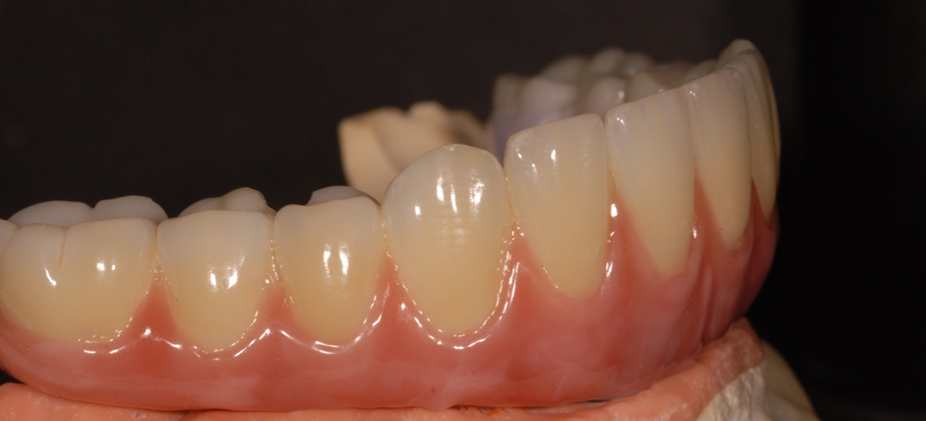
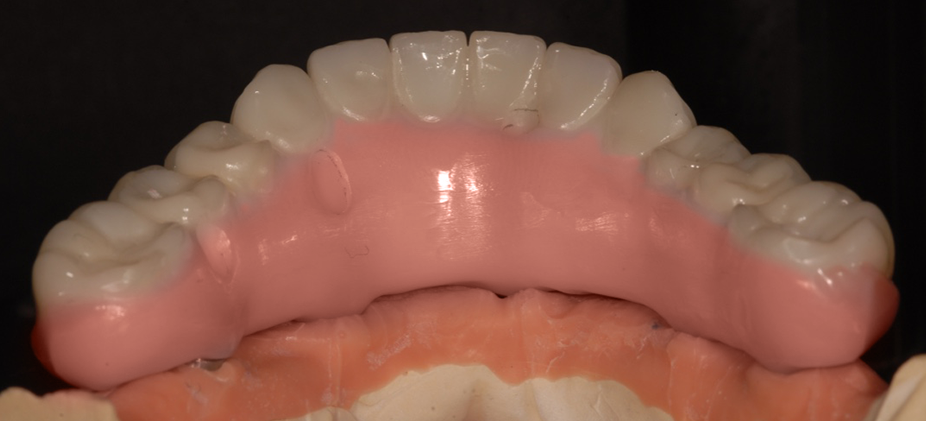
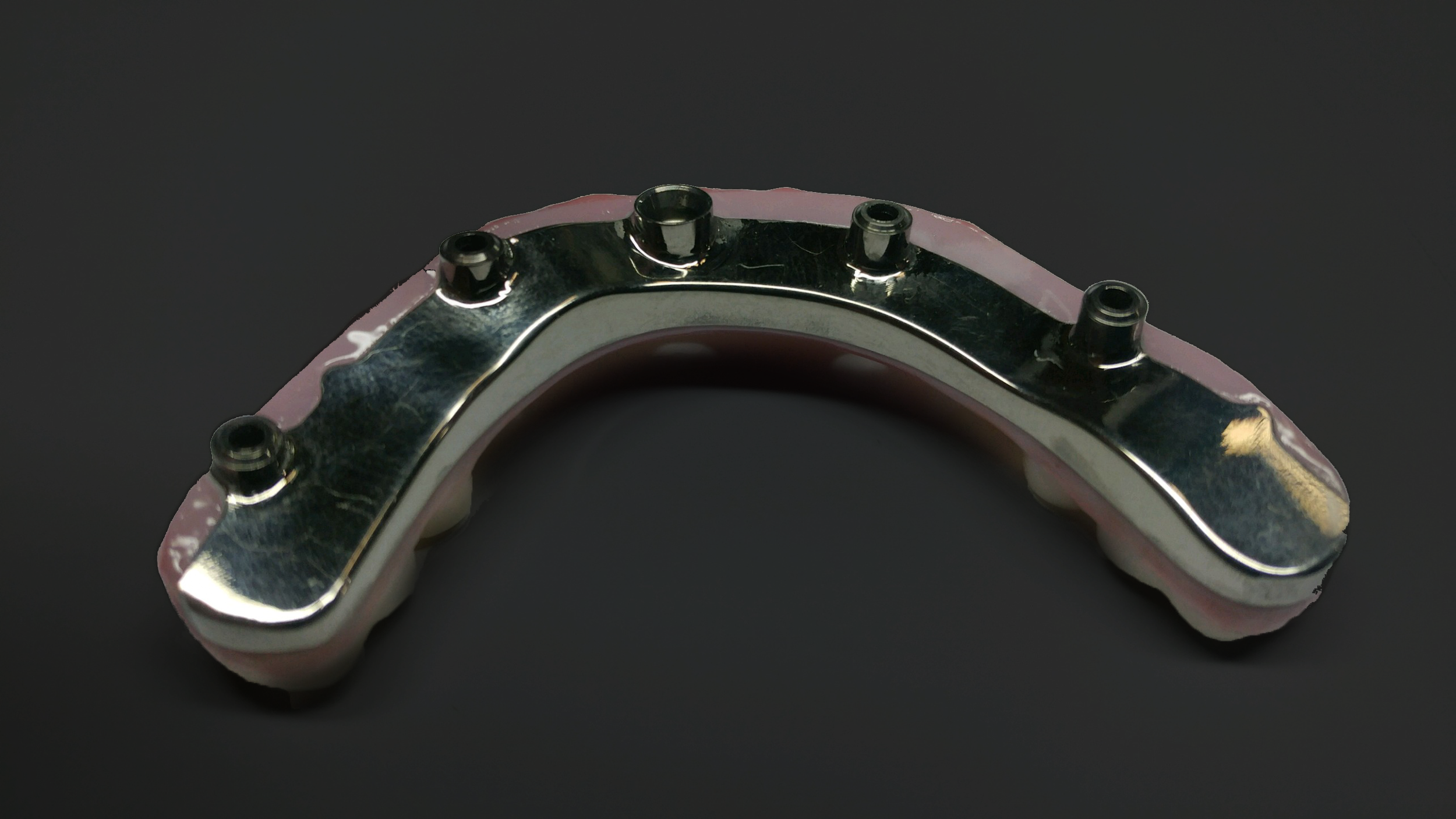

ADVANTAGES:
Superior Chewing Forces
Strong
Versatility With Lack Of Restorative Space
DISADVANTAGES:
Esthetics
Difficult If Not Impossible To Repair
PATIENT REQUIREMENTS:
The patient needs to have good dexterity to maintain good hygiene.
Must comply to a good hygiene protocol with water pick and Allure/Tepe Hygiene Kit.
DOCTOR'S REQUIREMENTS:
8 mm of restorative space from the incisal edge to the abutment platform.
Multi-Unit Abutment most likely required.
APPOINTMENTS:
With conversion, 4 Appointments are required.
Without conversion, 7 appointments are required.
TIME IN LAB:
With conversion, 39 working days (does not include weekends, holidays, and time in transit).
Without conversion, 47 working days (does not include weekends, holidays, and time in transit).
WARRANTY:
2 Years
More Info
PRICE:
Call Lab for a price quote.
Night guard: $70 (Recommended)
You will need four short appointments to restore your patient. The final prosthesis will be delivered to you finished.
When the patient is ready to be restored, call Allure Dental Studio and give them permission to release the case into production. Once this has been done, follow the four appointment protocol below.
Among the different bar options available on the market, this restoration requires the least amount of restorative space - 8 mm.
Appointment 1
This is the first time that you are removing the temporary denture from the patient’s mouth since the day of surgery. You must make sure you are using the correct driver from the right manufacturer.
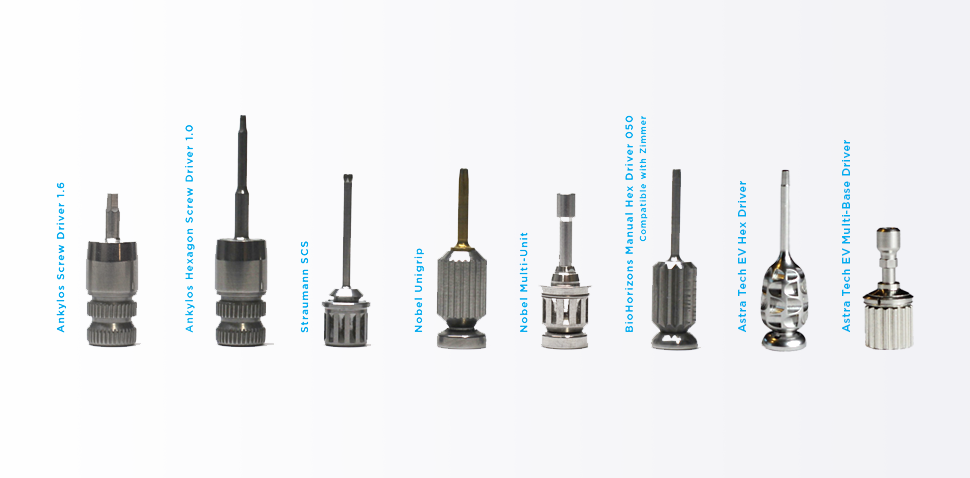
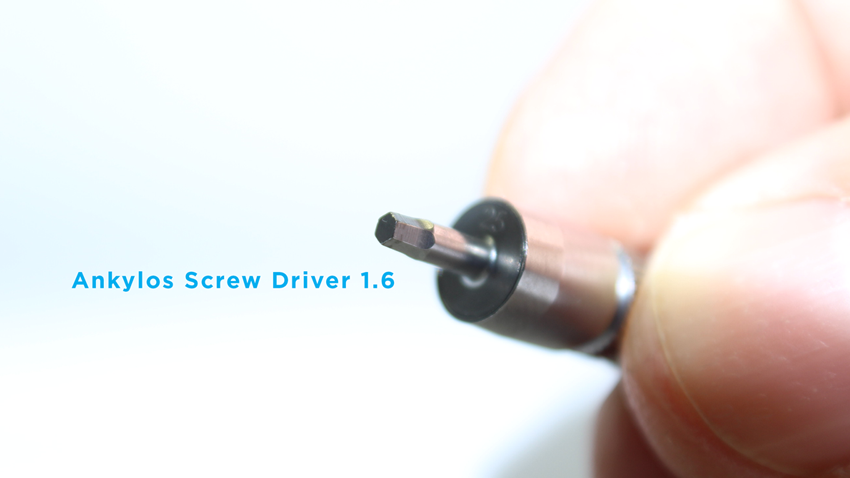
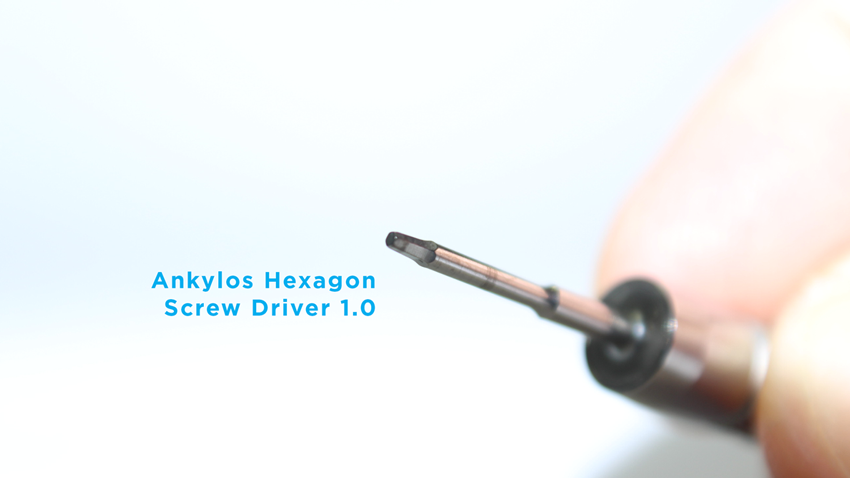
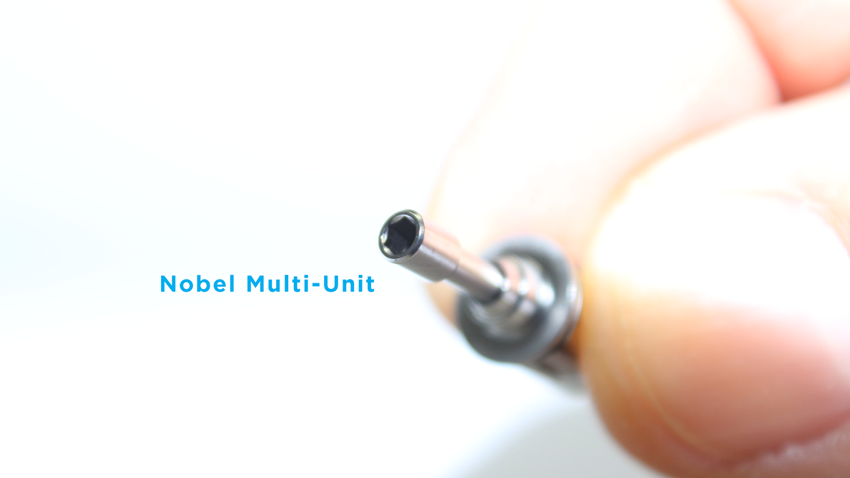
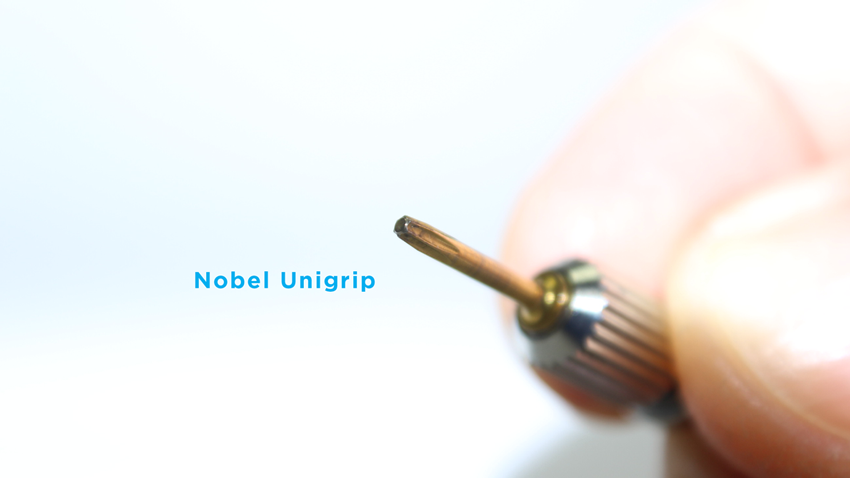
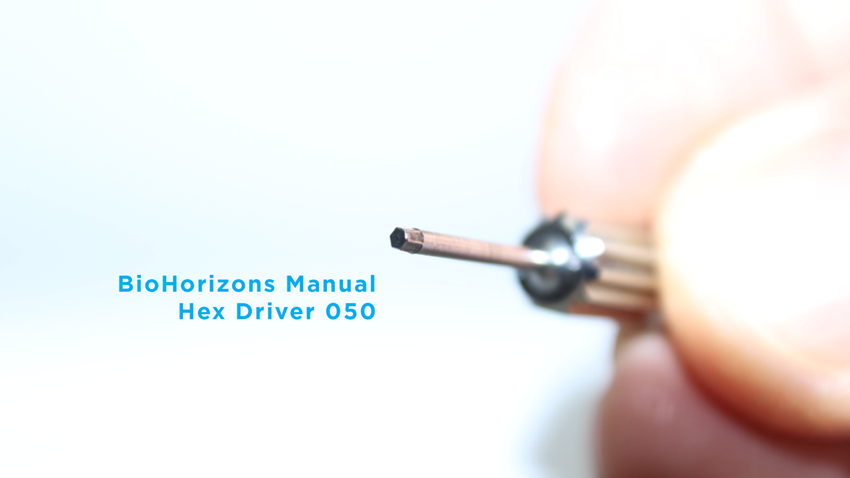
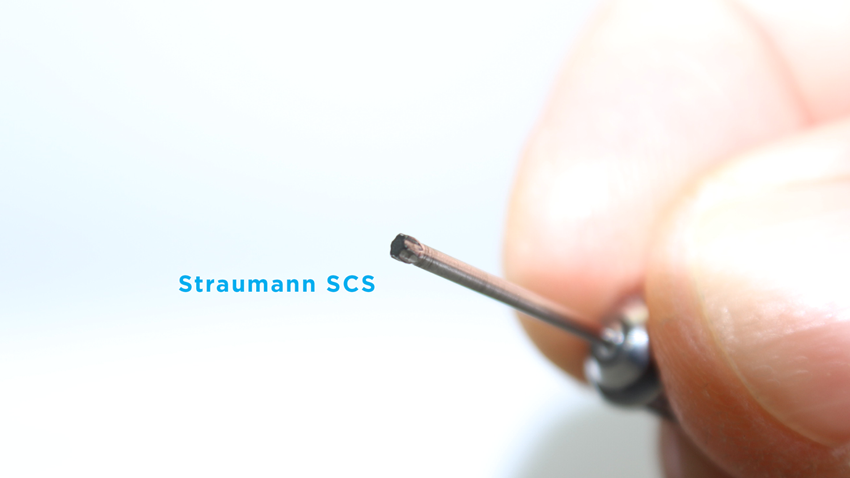
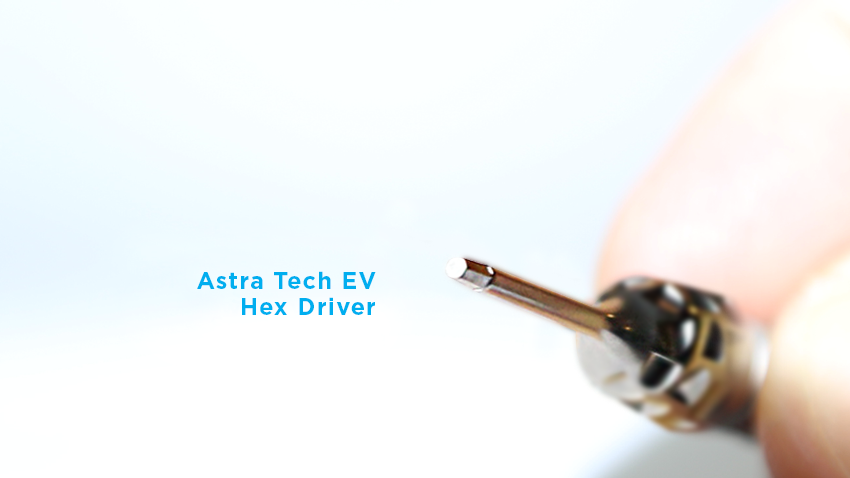
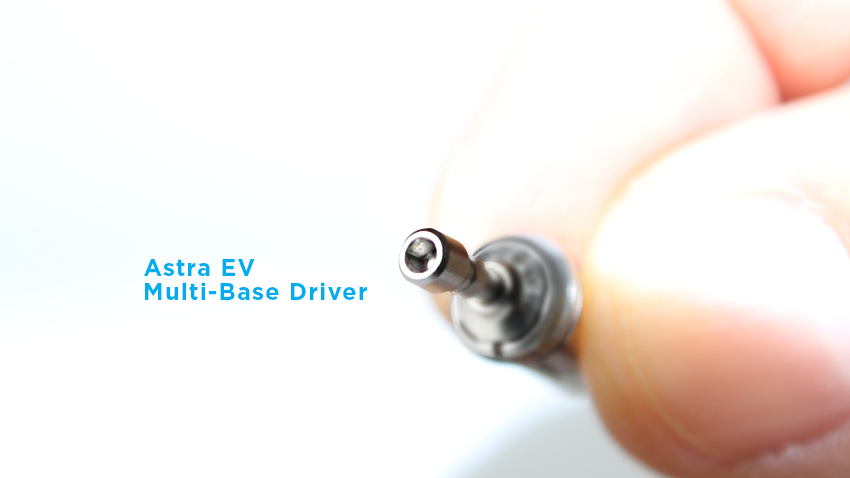
It will be very clear to you if the patient is using their water pick and flossing under the temporary. If they are not, the temporary will be covered in tarter and food residue. The soft tissue around the abutments will be red and swollen. This outcome is not acceptable. Maintaining the temporary and final restoration is the responsibility of the patient. If the patient is not dedicated to the care of their investment, serious complications may occur, such as restoration breakage or loss of implants. We suggest that you protect yourself by having a conversation with the patient about this potential issue and record it.
Lutting the verification jig
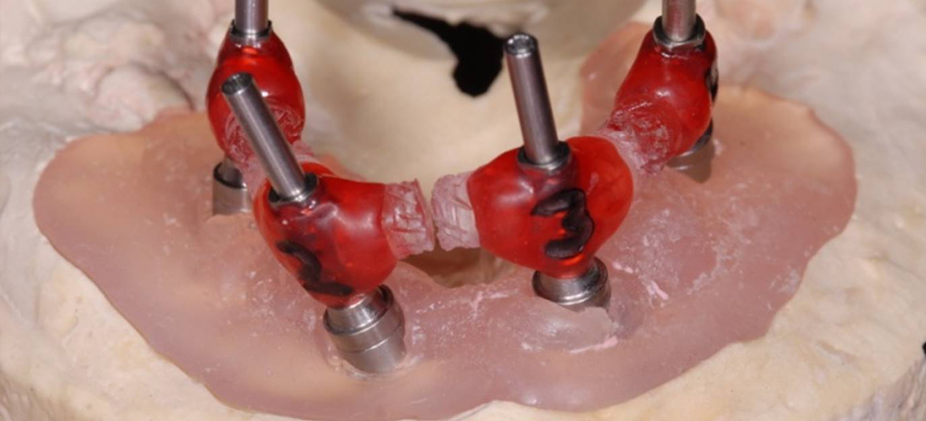
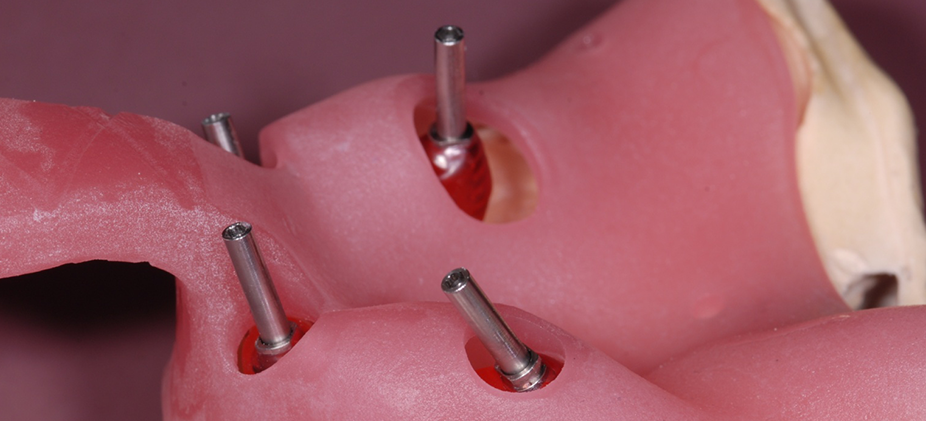
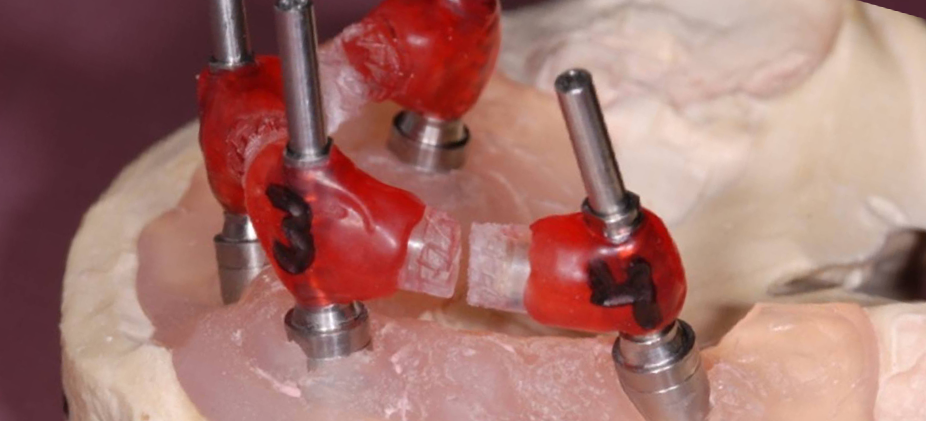
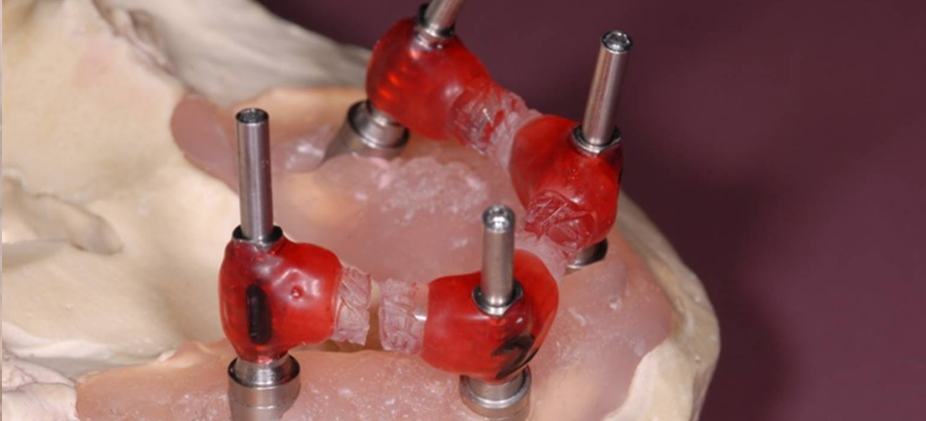
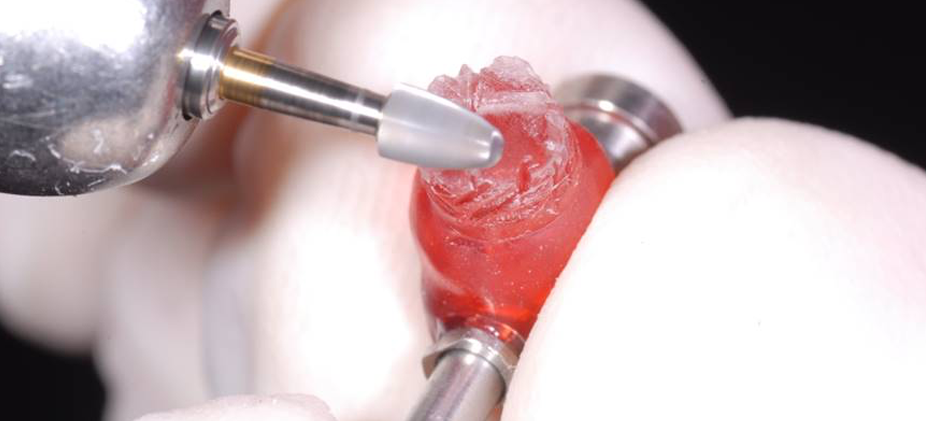


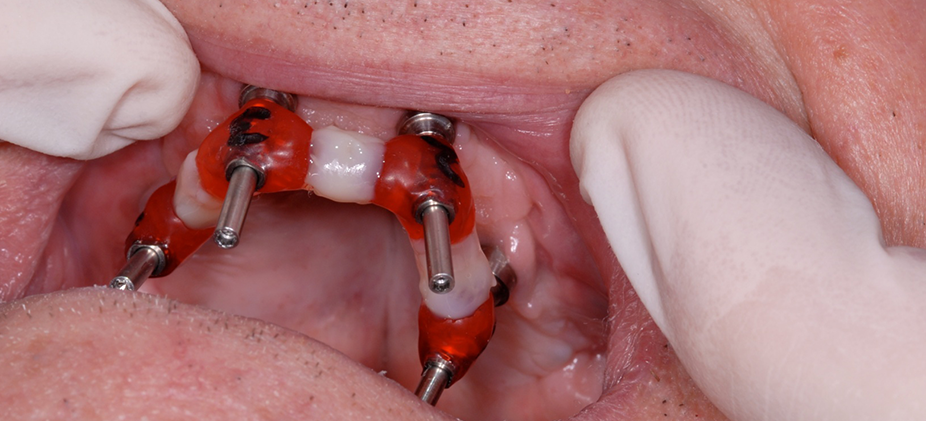
You will receive from Allure Dental Studio a verification jig seated on the model and made the day of surgery. It is pre-cut and labeled in 4 different sections. Note that you should have a space between each piece.
You will also receive a custom tray, which will fit precisely over the jig. Note that the screws (guide pins) are extra-long and must poke through the tray.
Before removing anything from the patient’s mouth, take the patient's bite registration.
Remove the temporary from the patient's mouth. Remove the plug, Teflon, and all screws. When you unscrew the prosthetic screws, it is important to ensure that they are not attached to the driver before inserting it into the next hole. It is acceptable for the screws to remain in the temporary, just be sure to remove them before moving on to the next step. Once the temporary is removed from the patient’s mouth, have your assistant clean it thoroughly.
Check each abutment and make sure that they are all torqued to the manufacturer's specifications. It does happen from time to time that an abutment might be slightly loose.
Remove one piece of the jig at a time, soak in Peridex, and place in the patient's mouth.
If one of the jigs touches another piece, remove it and adjust with a carbide bur.
Note the placement of the jig intra-orally. The temporary abutments are non-engaging, so you will have to position them as best as you can before hand torquing them into place with your driver.
Connect all sections together with a generous amount of suitable material (e.g., Triad DuaLine, Dentsply; Zapit, Dental Ventures of America; GC pattern resin, GC America; any flowable resins or composites) and extend to the left, right, above, and below the cut. Verify that the connections are solid, especially at the distal extremities.
Check visually for passive fit; if the interface is sub-gingival, take a radiograph to verify complete passive seating.
If a section is not seated passively, you must section, re-seat and re-lute the jig. Repeat until you get a perfect passive fit.
final impression
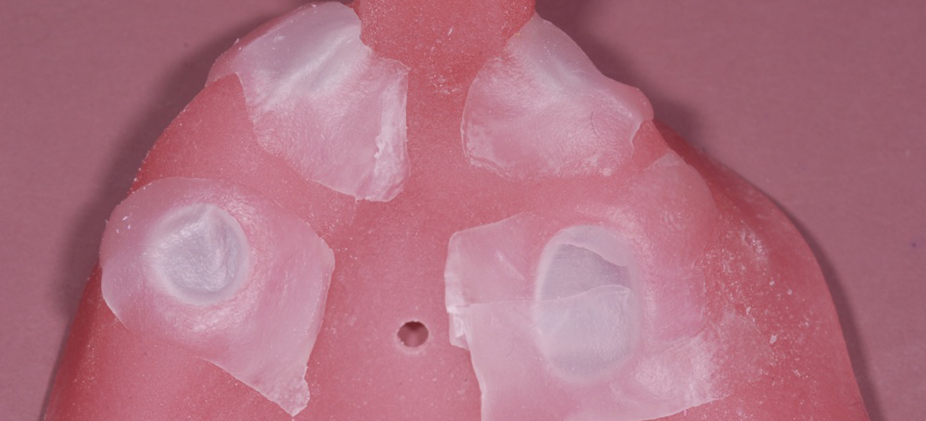
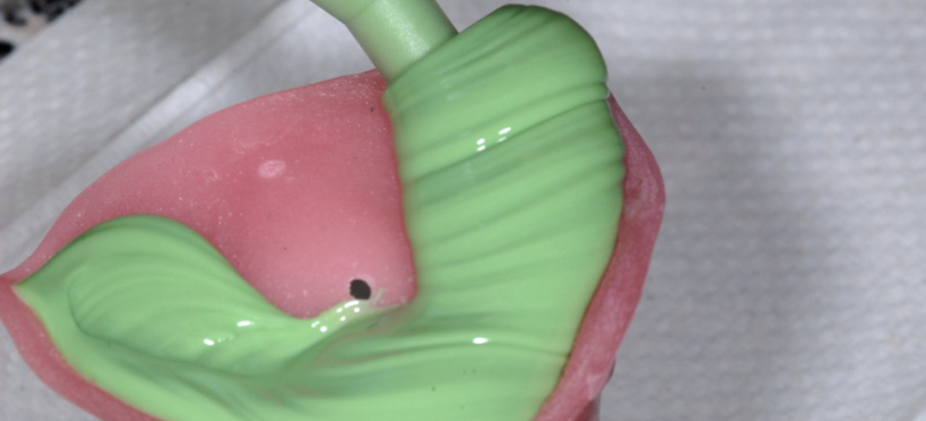
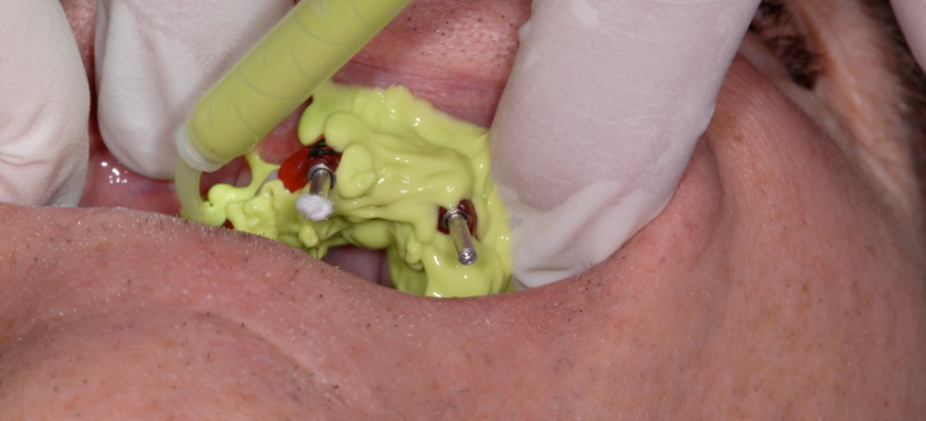
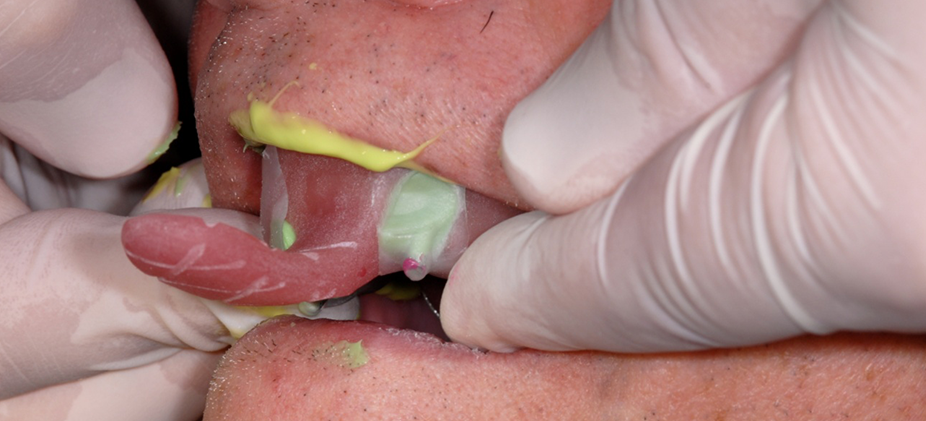
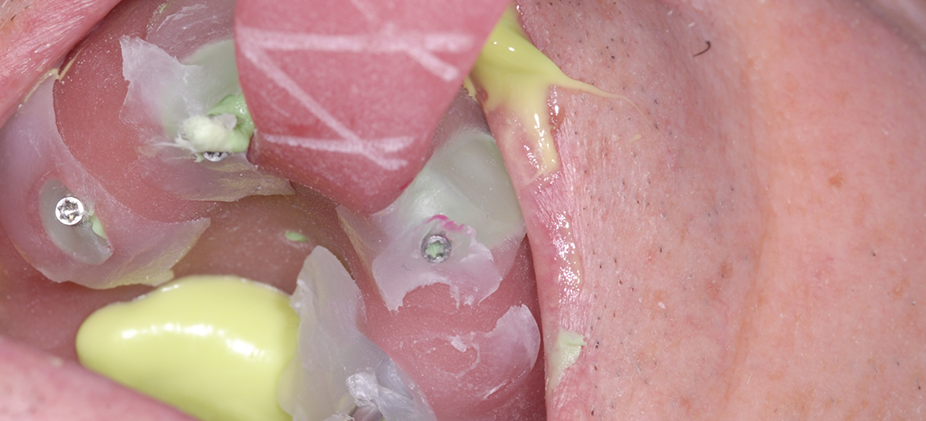
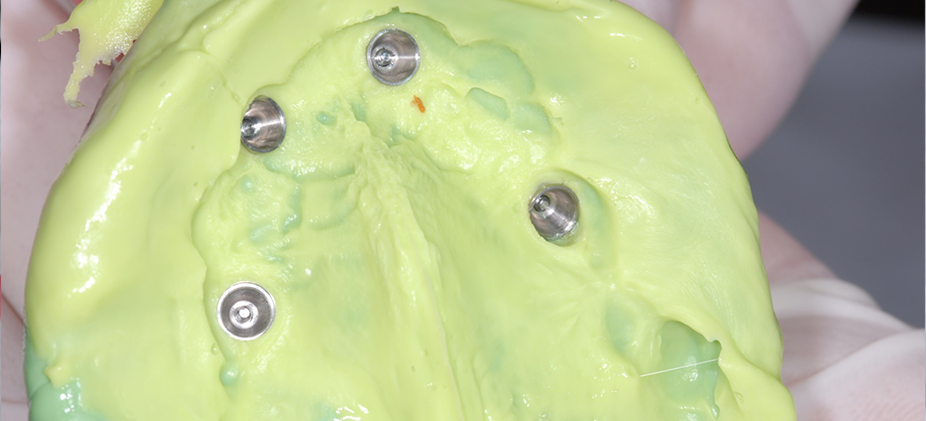
To ensure a passive fit of your Opal-Z SR Full Arch, it is important to obtain an accurate final impression.
Before preparing the tray for the impression, practice the path of insertion into the patient's mouth. Once you feel comfortable with the path of insertion, prepare the provided custom tray with utility wax. Take a small piece and squeeze it between your fingers. Make the piece thin and apply it above each access hole. The reason for this is to control the impression material from not flowing through the holes.
Fill the tray with heavy body. Do not overflow, and do not cover the palate if you are taking an upper impression.
Apply light body in the patient's mouth.
Take the impression of the patient's mouth and make sure that the long guide pins find their way through the wax. The guide pins must extend through the wax. If the guide pins do not come through, adjust the tray until they clear. If you are still unable to find them, it is likely that you applied too much impression material in the tray. Probe with your finger until the pins are located.
Unscrew each screw and remove the impression from the patient’s mouth.
duplicating the temporary
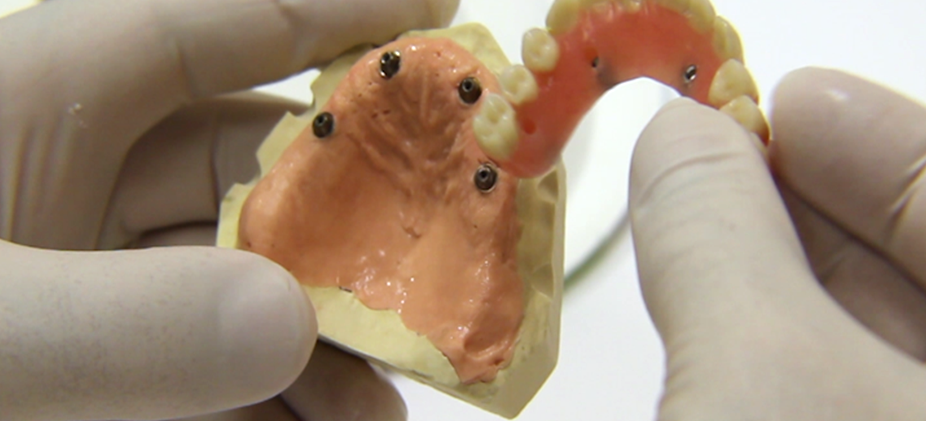
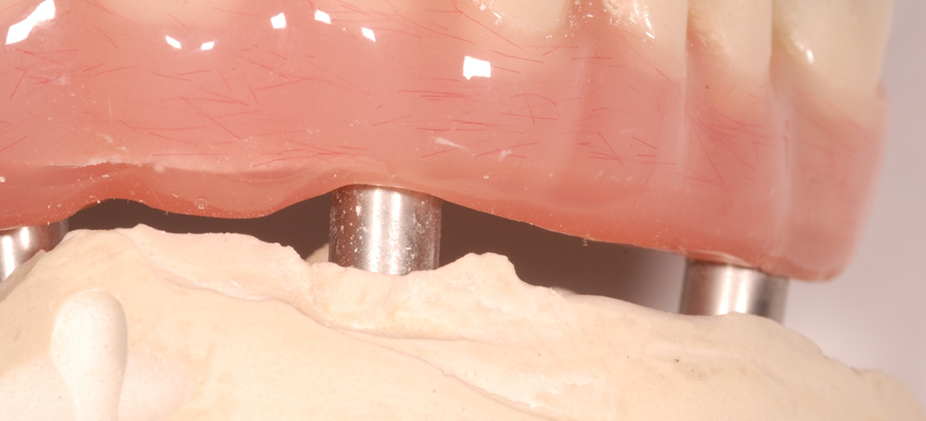
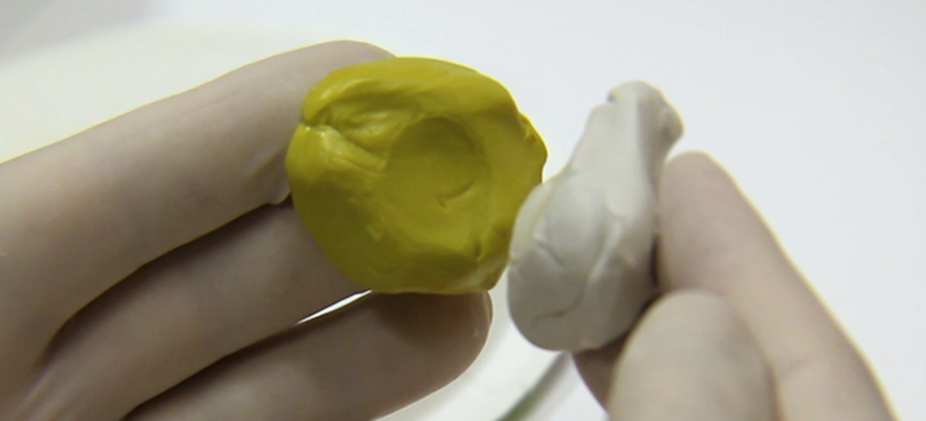

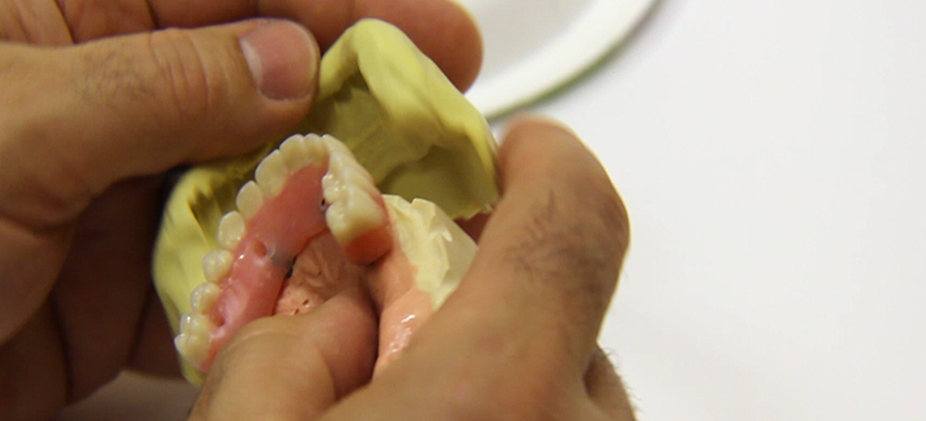
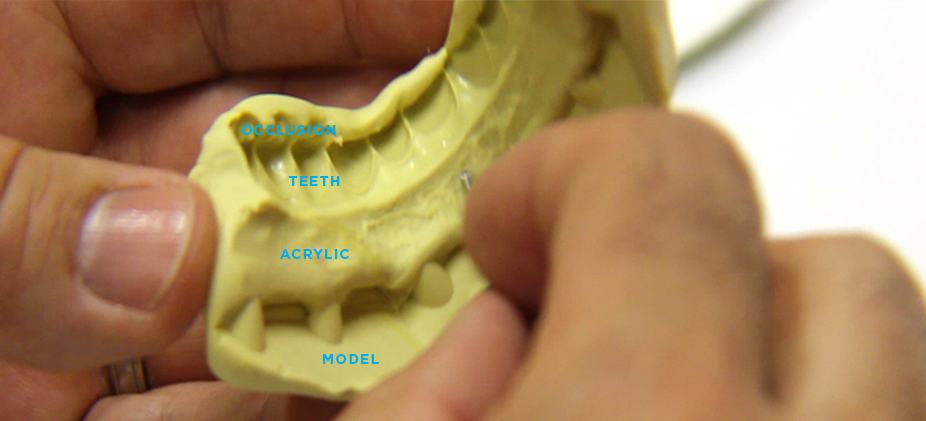
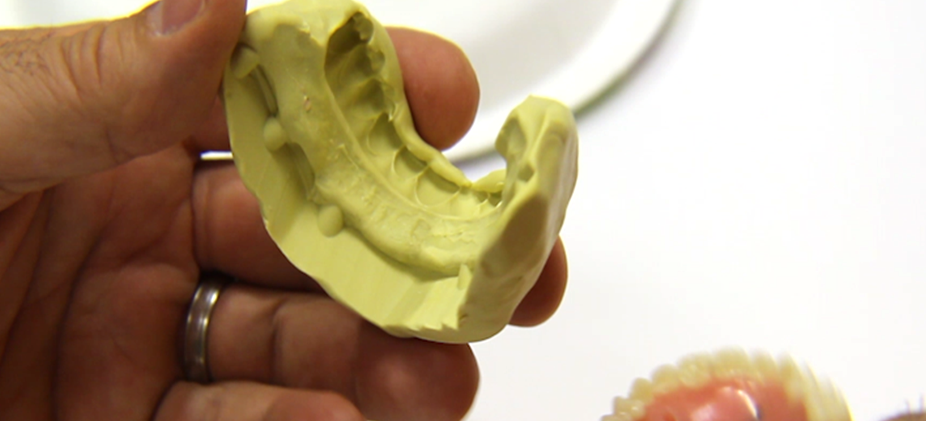
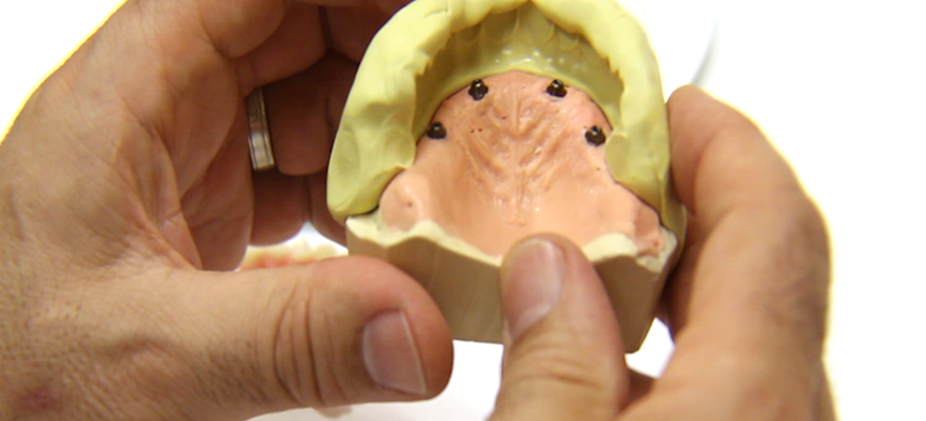
In order to avoid an additional full restorative appointment, we also require that you duplicate the temporary, which will be utilized as a customized bite rim.
Take the provided model and remove the soft tissue by gently peeling it off the model.
Place the temporary appliance onto the model and hand torque 2 to 4 screws.
Thoroughly mix the matrix material that we provided to you.
Apply the matrix material to the model, the acrylic on the buccal/facial side, the facial aspect of the teeth, and the occlusion.
Once you are done with these steps, replace the temporary in the patient’s mouth and hand torque the screws to manufacturer recommendation. Place Teflon tape or floss in each access hole and cover them with light body. At this point you are done with Appointment 1.
Call Allure Dental Studio for a pick-up. Return all components, models, impressions, and our Sequential Prescription™, ensuring that all pertinent information is provided. Keep the remaining pages of the Rx in your office.
Appointment 2
Wax try-in

Remove the temporary from the patient's mouth. Remove the plug, Teflon, and all screws. When you unscrew the prosthetic screws, it is important to ensure that they are not attached to the driver before inserting it into the next hole. It is acceptable for the screws to remain in the temporary, just be sure to remove them before moving on to the next step. Check the soft tissue and abutment for redness or swelling.
Try-in the frame and setup in the patient's mouth.
Hand-tighten each screw to the manufacturer's specifications.
Evaluate fit, form, function
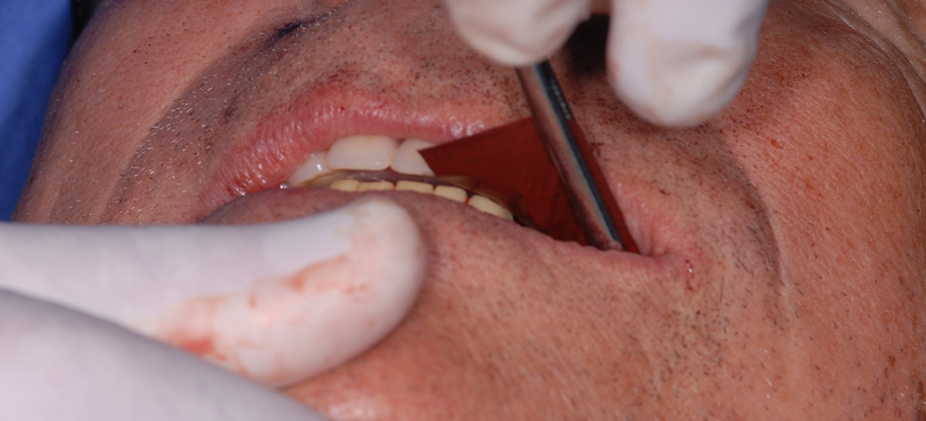
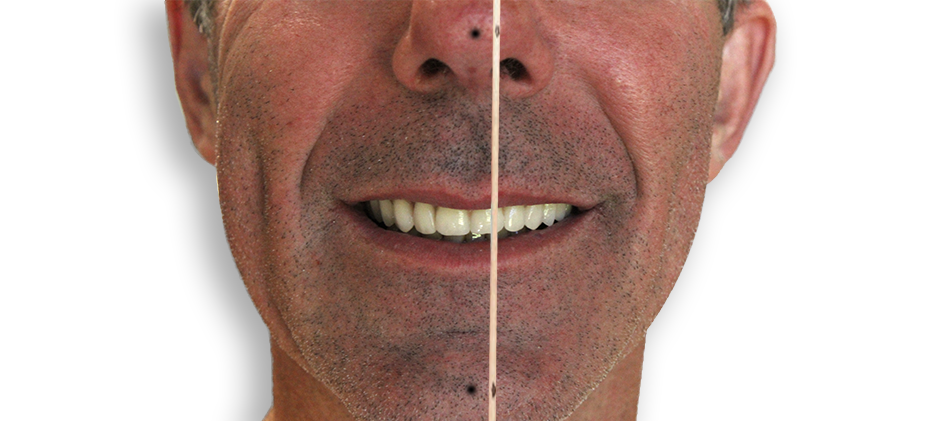
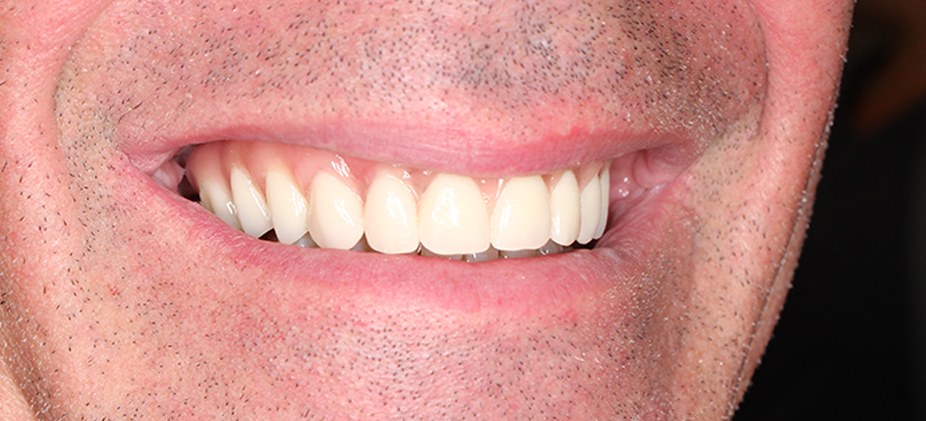
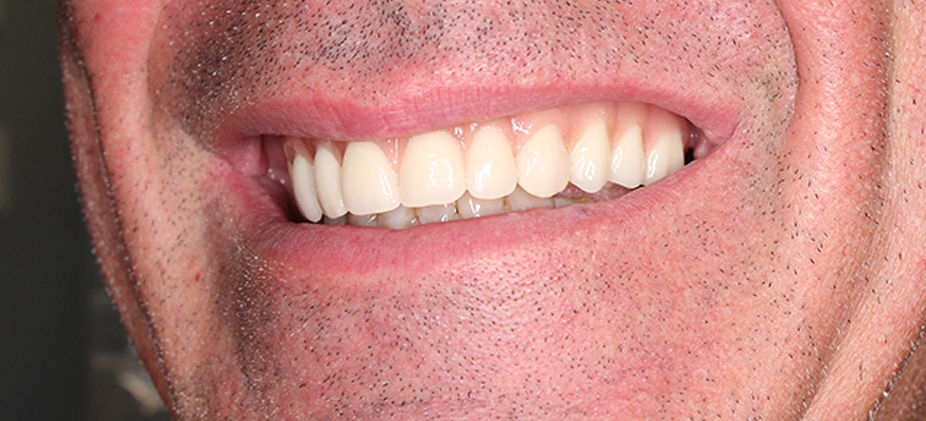
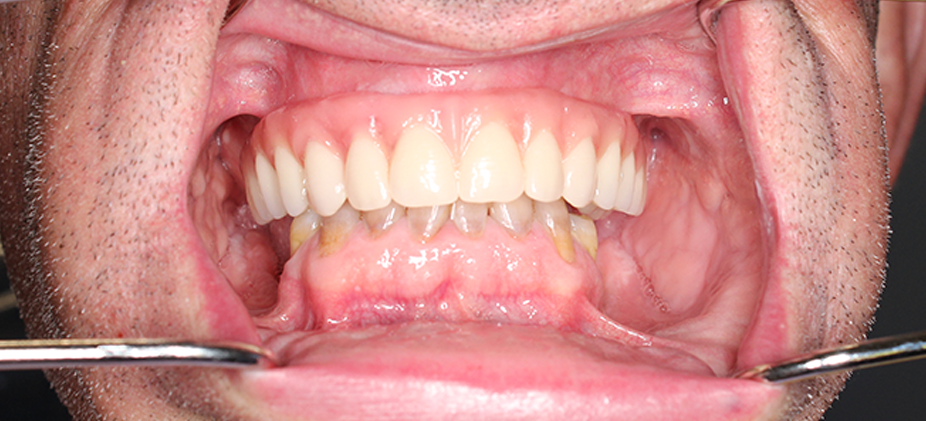
Group function is preferred with a light occlusion on the anterior.
Evaluate the VDO.
Check for fit, form, function, shade, phonetics, and midline. Make any final adjustments if needed.
Take pictures.
Once you are done with these steps, replace the temporary in the patient’s mouth and hand torque the screws to the manufacturer's recommendation. Place Teflon tape or floss in access hole and cover them with light body. At this point you are done with Appointment 2.
Call Allure Dental Studio for a pick-up. Return all components, models, impressions, and our Sequential Prescription™, ensuring that all pertinent information is provided. Keep the remaining pages of the Rx for your records.
appointment 3
PMMA Validation Temporary
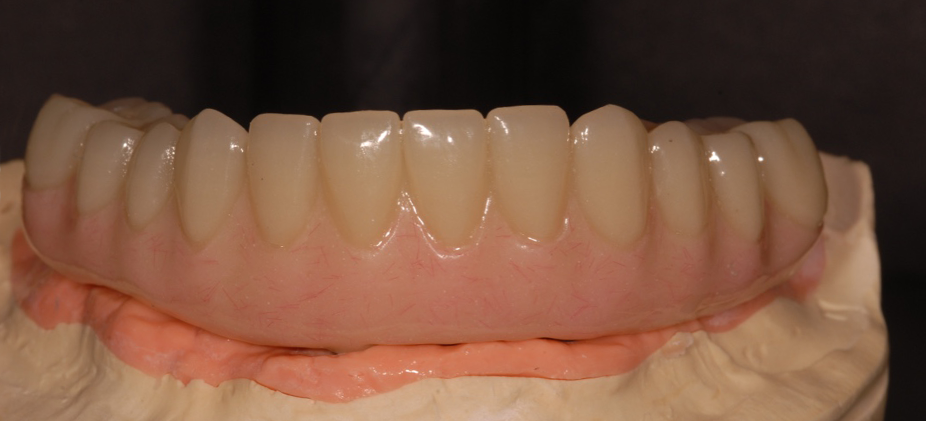
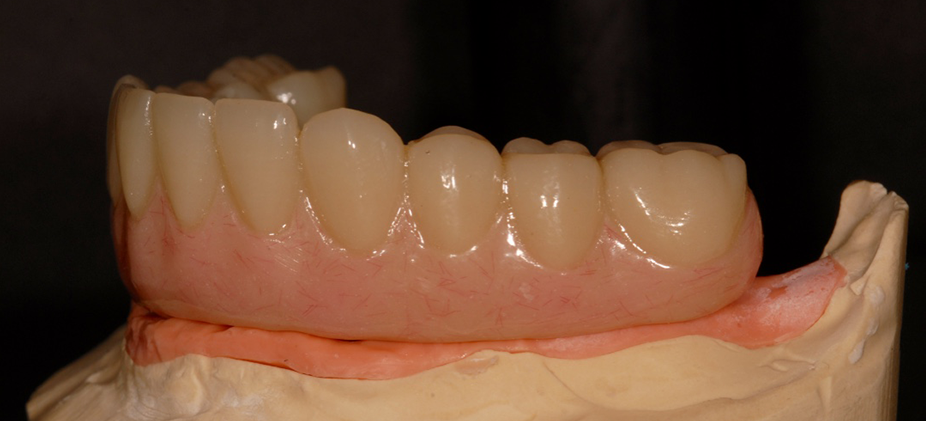


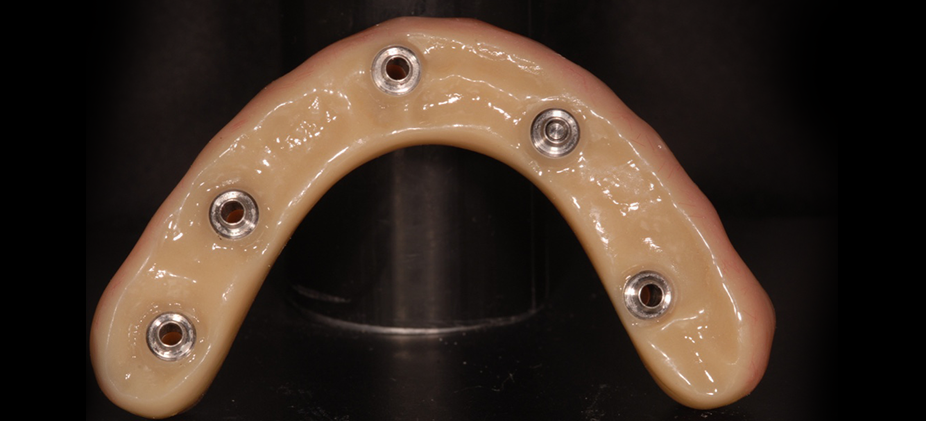
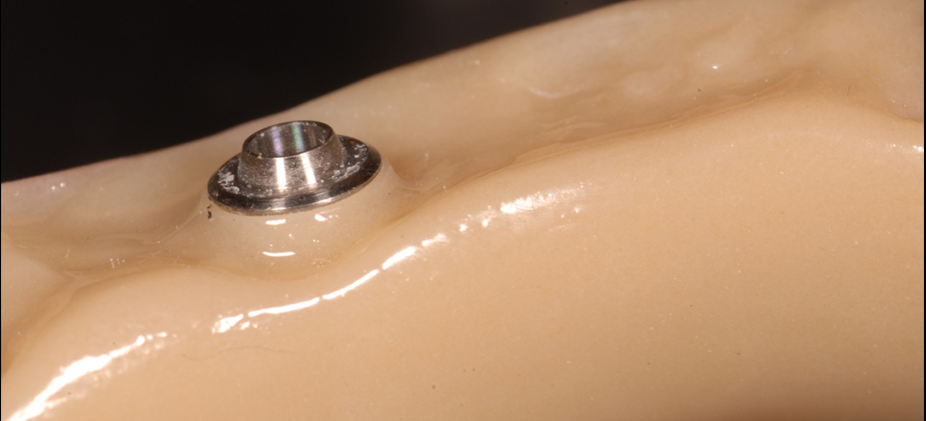
Fabricated from poly(methyl methacrylate) (PMMA), the try-in appliance is designed using the precision of state of the art CAD software and replaces a traditional wax setup. PMMA can easily be adjusted to accommodate changes that are typically made to the wax setup.
Seat the PMMA try-in appliance on the multi-unit abutments. Hand-tighten the prosthetic screws, alternating from one side to the other.
Evaluate the VDO, CR, esthetics, shade, tooth arrangement, occlusion, phonetics and midline. Make adjustments as necessary. If the occlusion is incorrect, a new bite registration should be taken.
DELIVERY OF PROVISIONAL PMMA IMPLANT PROSTHESIS
The provisional implant prosthesis serves as a temporary appliance and allows the patient a trial period to evaluate the definitive design prior to fabrication of the final restoration.
Seat the provisional prosthesis on the multi-unit abutments.
Hand tighten the prosthetic screws, alternating from one side to the other.
Tighten the screws to the appropriate torque per manufacturer.
Any adjustments made to the PMMA try-in appliance should also be made to the provisional implant prosthesis. The provisional implant prosthesis will be worn until delivery of the final restoration.
Place a small amount of silicon tape or cotton in the screw access holes and fill with light cure composite or acrylic. You are now done with Appointment 3.
Return the case to Allure Dental Studio. Include the PMMA try-in appliance, the working cast and opposing model, the final impression containing the implant verification jig and guide pins, and lab Rx with adjustments noted.
Appointment 4
Final Delivery


Remove the temporary from the patient's mouth. Remove the plug, Teflon, and all screws. When you unscrew the prosthetic screws, it is important to ensure that these screws are not attached to the driver before inserting it into the next hole. It is acceptable for the screws to remain in the temporary, just be sure to remove them before moving on to the next step. Once the temporary is removed from the patient’s mouth, have your assistant clean it thoroughly. Check the soft tissue and abutment for redness or swelling.
Place the final restoration in the patient’s mouth and check for passive and accurate fit. Make sure that you did not infringe on any soft tissue.
Start placing a screw in each hole. Do not torque the screws all the way until the last one has been inserted. To ensure a successful seating of the appliance, screw in the prosthetic screw fully, then back it out 30%. Doing this will allow the appliance to be seated with a passive fit. Once all the screws are in, hand torque them to the manufacturer's specifications.
Fill all access holes with Teflon tape, then acrylic or composite, and finish by polishing.
Evaluate the bite, the VDO, and make any final minor adjustments if needed.
Take pictures for your own portfolio.
Take a panoramic X-Ray to verify that everything seats well and passively.
Make sure to provide your patient with the proper tools to maintain a healthy appliance. Allure Dental Studio partnered with TePe to create a Post-Op Care Kit to meet your patient's needs.


